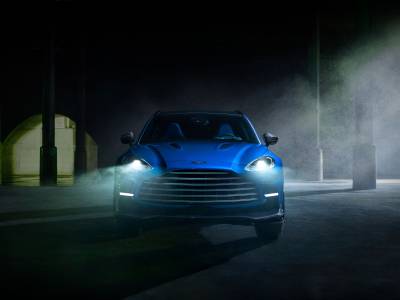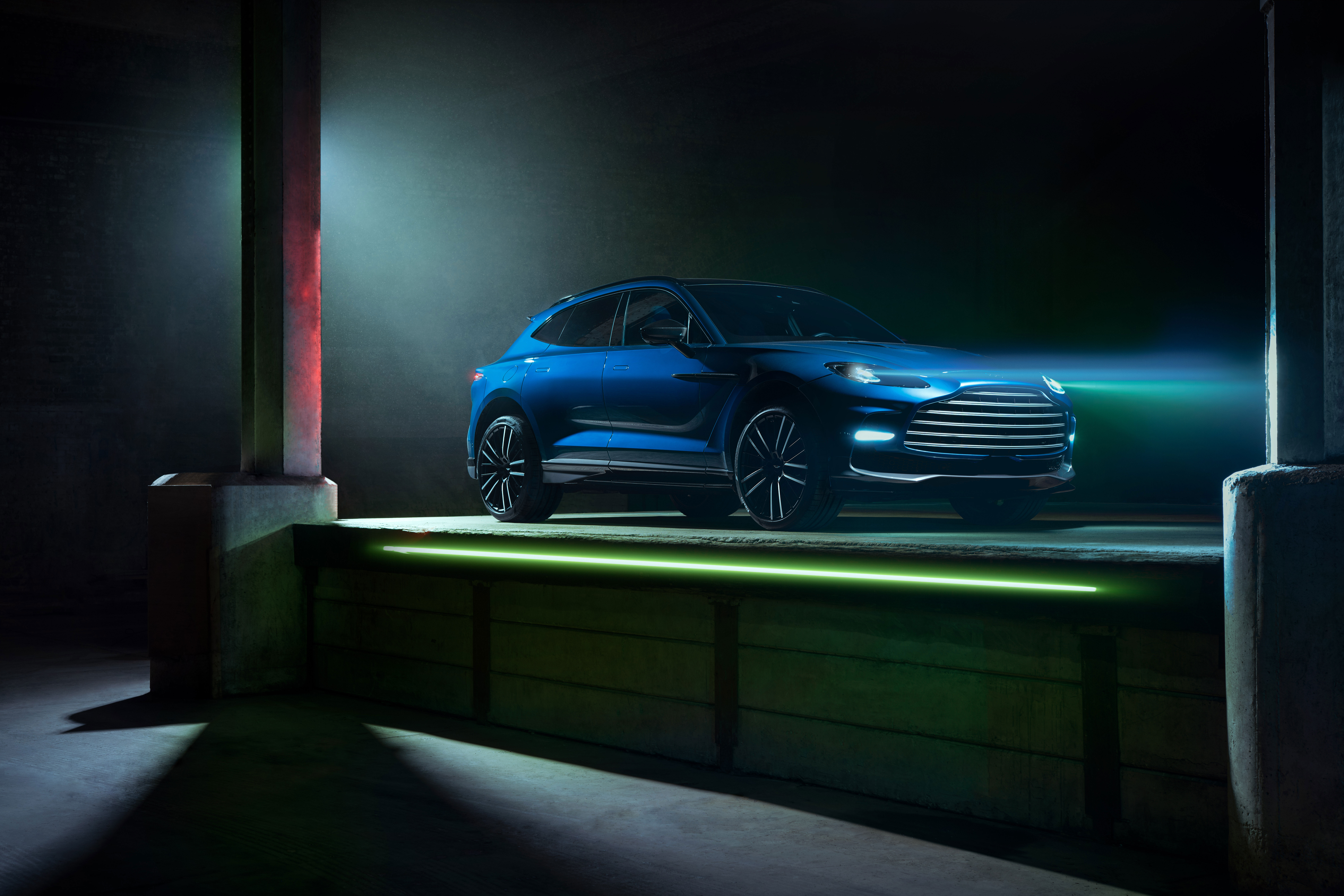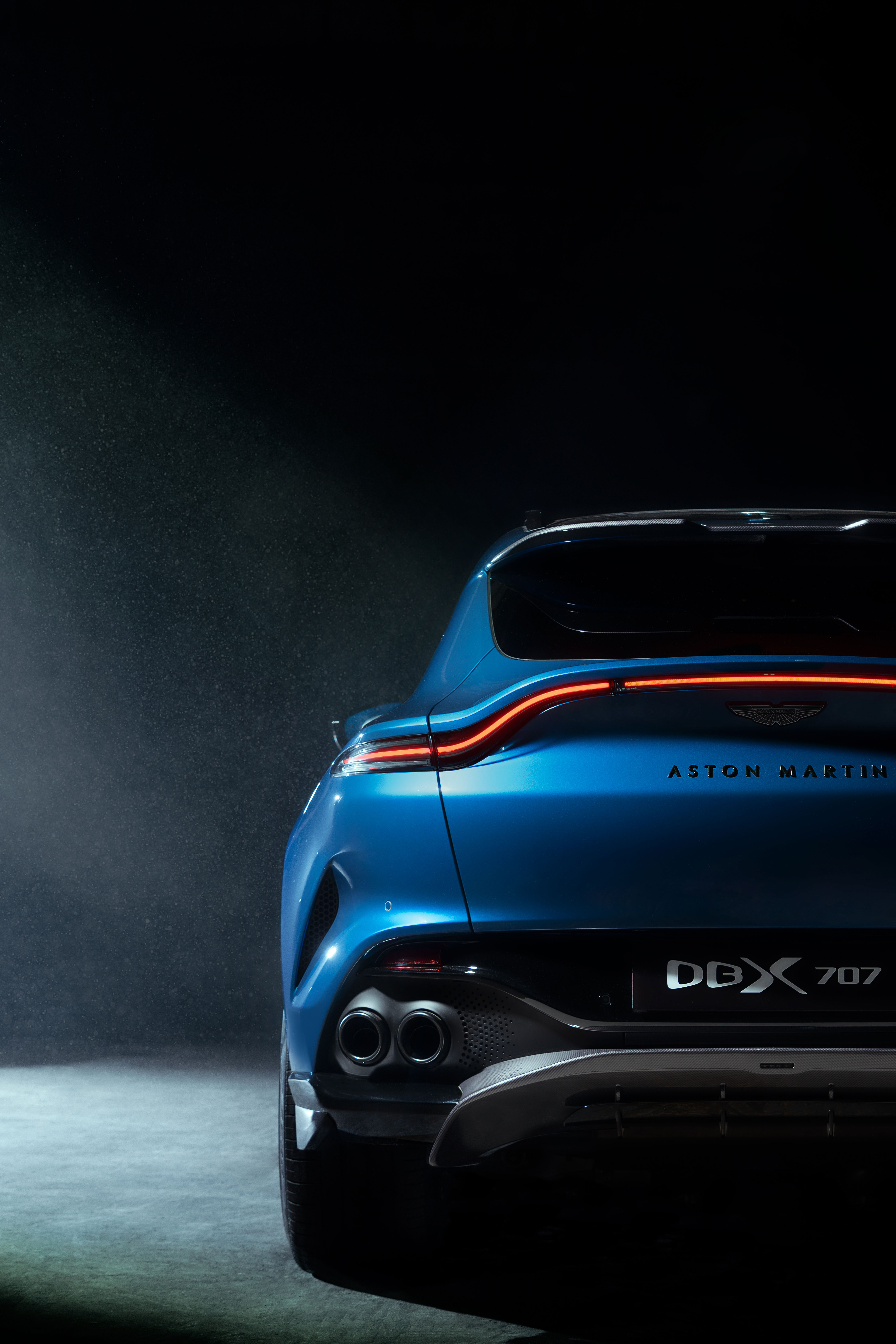When did the utility vehicle become the sports utility vehicle? Let’s say roughly two decades ago, but whatever the year zero, it represents arguably the key paradigm shift in the higher echelons of the automotive world. Customers loved the commanding driving position, the promise of being able to go pretty much anywhere — even if they never actually did — and the sheer presence a vehicle of this size and fortitude delivers.
While Aston Martin may not have been first into the fast, luxury SUV fray, the DBX vividly demonstrates that full-blooded dynamics don’t have to be sacrificed on the altar of extra mass. Now the new DBX707 alters the coordinates and pushes the parameters yet further.
“The DBX represents Aston Martin’s dynamic and design values in a way that proves not all SUVs have to conform to the same compromises,” Aston Martin CEO Tobias Moers says. “With the DBX707, we have pushed the boundaries to create a car that sets new standards of performance and desirability. The fastest, most powerful and most engaging car of its kind, it propels Aston Martin to the pinnacle of SUV performance.”
As someone who has followed Moers around Germany’s famous Nürburgring circuit — both of us in extremely rapid cars — I can tell you that the man’s commitment to peerless chassis dynamics is absolute. He’s renowned in the automotive industry for not letting go until everything is as good as it can possibly be; for balancing the empirical with the emotive. The DBX707 is a textbook example of what happens when you turn up the dial on something that’s already pretty damn cool.
According to Aston Martin, every area of the car has been enhanced to increase performance, driving pleasure and on-road presence. Let’s start with the powertrain. The DBX’s 4.0-litre twin-turbocharged V8 is a magnificently charismatic and clever engine, but there’s always more that can be done. New for the DBX707 are ball-bearing turbochargers and more potent calibration, measures designed to extract extra power and torque. Power is up by 157PS to 707PS, torque increased by 200Nm to a thumping
900Nm. That’s a lot of grunt, which has necessitated other key alterations: the new car receives a nine-speed wet clutch automatic transmission instead of the regular torque converter, which ensures exceptionally crisp response and precision.
Having driven the regular car around Aston Martin’s Silverstone test track and beyond, it’s difficult to imagine an SUV with even more agile handling than the DBX. But the 707 goes further, even faster. Top speed is 193mph and the zero to 62mph time is now a barely believable 3.3 seconds, if you harness the Race Start function available in the GT Sport or Sport+ drive mode.
Torque distribution front-to-rear is done automatically and, if the conditions permit, 100% of the available torque can be sent to the rear axle. This is a configuration that mirrors the traditional sports car set-up — and the one savoured by the keenest drivers. The DBX uses a triple-volume air chambers in its suspension, but for the 707 there’s new damper valving and the spring volume has been altered to optimise body control. The power steering has also been recalibrated to deliver extra weight off-centre. All those things that can disturb a car in motion — heave, pitch and roll — have been further checked without compromising the ride quality.
In other words, while the DBX is bigger and weighs more than its stablemates, the e-diff and this chassis wizardry ensure that it has remarkably similar handling smarts and agility. The DBX707 feels like a smaller and more overtly sporting car.
“The DBX has always been very throttle adjustable. We’ve put a huge amount of effort into the driving dynamics brain,” says Drummond Jacoy, Head of Vehicle Engineering and Procurement. “The integrated vehicle control unit has been taken to an even higher level, as has the body control. We’ve dialled it all up, making sure everything that already existed works to its full potential.”
Of course, all this power and potential is only one part of the kinetic story; stopping is as important an element as going. The DBX707 has carbon ceramic brakes as standard, gripped by six-piston calipers. Pedal feel and response have also been improved, and there’s enhanced cooling thanks to an additional underfloor air intake. A 22in wheel is standard, with a 23in rim available in textured black or satin black with diamond turned highlights.
Which brings us to the DBX707’s exterior makeover. Executive Vice President and Chief Creative Officer Marek Reichman comments, “We concentrated on those areas of the design that would make the DBX707 instantly recognisable as the highest performing model. The design exudes potency while retaining pure lines and perfect proportions.”
As one of the most fascinating-looking cars on the road, the DBX now comes with impressively sculpted extra visual muscle. The satin chrome grille — enlarged to aid airflow — features six double-vaned horizontal bars. A new gloss-black front splitter has its hue matched in the window surrounds, side sills and bonnet louvres. At the rear, a new roof wing has aerodynamic properties to reduce lift and enhance high-speed stability. Similarly, there’s a much bigger rear diffuser, framed by a new large diameter quad exhaust, also finished in gloss black.
This seductively sombre effect is put to good use inside too. The switchgear is finished in dark chrome as standard, against a Piano Black veneer (with carbon fibre or bronze metal mesh options also available). Sport seats with 16-way electric adjustment are standard, and there’s a choice of three interior environments: Accelerate, Comfort, and Inspire Sport. Note also a revised lower console with new drive mode selection switches for suspension, ESP, manual gear selection and the sports exhaust. DBX707 drivers need not spend time rummaging through the infotainment system’s sub-menu if they find themselves on a particularly entertaining road. And that may be more often than not.
Read more at magazine.astonmartin.com








